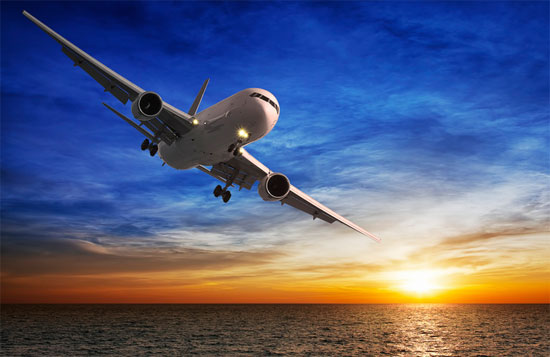The flights across the Atlantic will be more bumpy
Global warming may cause future wind speeds to rise, a trend that reduces the safety of flights.
Dr. Paul Williams, a researcher at the University of Reading in England, and colleagues used meteorological models to understand the changes in wind speed in the North Atlantic in the past and in the future. They gradually increased carbon dioxide (CO 2 ) in the model to see how the wind speed changed from the pre-industrial era to 2050, the BBC reported.

Wind speed in the northern Atlantic Ocean increased
gradually after each decade. (Photo: insureandgo.com.au)
The results showed that the higher the amount of CO2 in the atmosphere, the greater the wind speed. Wind speed in the northern Atlantic region is now higher than in the past. Due to the impact of climate change, the average wind speed in this area in the future will increase from 10 to 40% compared to the present. Space affected by air turbulence also increased from 40 to 170%.
Williams' discovery means that aircraft flying across the North Atlantic Ocean will face stronger winds and greater probability of encountering turbulence.
"The risk of an aircraft experiencing moderate and strong air turbulence increases by 10.8% , " Williams said.
When airplanes get into a medium or higher level of turbulence, passengers will find it difficult to walk, the cups of water may fall, and the people who wear the seat belts will feel tight in the abdomen.
The increasing trend of wind speed not only reduces the safety of the flight, but also causes financial losses.
"If airplanes have to fly around to avoid air turbulence, fuel costs will naturally increase. To offset fuel costs, airlines will have to raise fares. Thus, passengers will have to pay. more money to board the plane, ' commented Williams.
Currently about 600 flights between the Americas and Europe take place on the north side of the Atlantic Ocean. If all aircraft have to fly around to avoid strong winds, airlines will have to spend billions of dollars more each year.
- China: canceled 190 flights due to fog
- Video: Map road maps over the North Atlantic Ocean
- The little bird flies without a break through the Atlantic Ocean
- Discover new creatures under the Atlantic Ocean
- Blizzard in the US caused thousands of flights to be canceled
- Detecting shipwrecks containing silver in the Atlantic Ocean
- The Atlantic will be
- The extremely poisonous lion fish is invading the Atlantic
- Save the Atlantic with the old electric wagon
- Successfully recreating endangered coral in the laboratory
- Water in the Indian Ocean flows into the Atlantic Ocean
- The lucky one survived 60 hours on the Atlantic bottom before being rescued by a diver
 Is the magnetic North Pole shift dangerous to humanity?
Is the magnetic North Pole shift dangerous to humanity? Washington legalizes the recycling of human bodies into fertilizer
Washington legalizes the recycling of human bodies into fertilizer Lightning stone - the mysterious guest
Lightning stone - the mysterious guest Stunned by the mysterious sunset, strange appearance
Stunned by the mysterious sunset, strange appearance